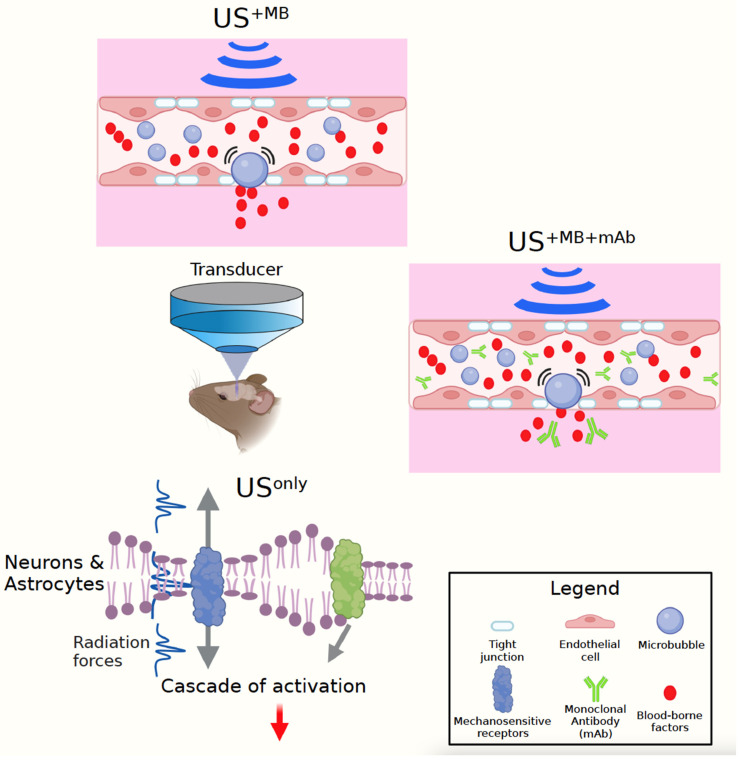Figure 1.
Ultrasound modalities: This review discusses three ultrasound (US) modalities, with a transducer generating the sound waves which travel through the skull into the mouse brain. To open the blood–brain barrier (BBB), microbubbles (MBs) are intravenously injected (US+MB). Upon US exposure, the MBs start to oscillate (or cavitate) in the brain capillaries, thereby causing pressure on the BBB’s tight junctions that transiently open and make the interstitial space of the brain accessible (US+MB). This modality relies on the therapeutic effects of endogenous, unidentified blood-borne factors that are taken up by the brain. US+MB+mAb uses therapeutic agents as exemplified by monoclonal antibodies (mAbs) that together with blood-borne factors are taken up by the brain when the BBB opens within the focal volume of the US beam. Finally, US can also be used on its own, in the absence of BBB opening (USonly). The principal mechanisms of US are the generation of heat (for the work discussed here largely negligible), its radiation force, and cavitation, with the latter coming into play, in particular, with the use of MBs in the two modalities US+MB and US+MB+mAb. In USonly, in the absence of significant cavitation and heating, the dominating principle is the radiation force (together with the rapid expansion/contraction of neuronal membranes). This is shared between the three US modalities and induces a cascade of activation events in cell types such as astrocytes and neurons, as discussed here. Figure generated with BioRender.

